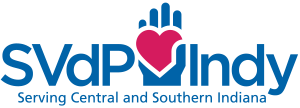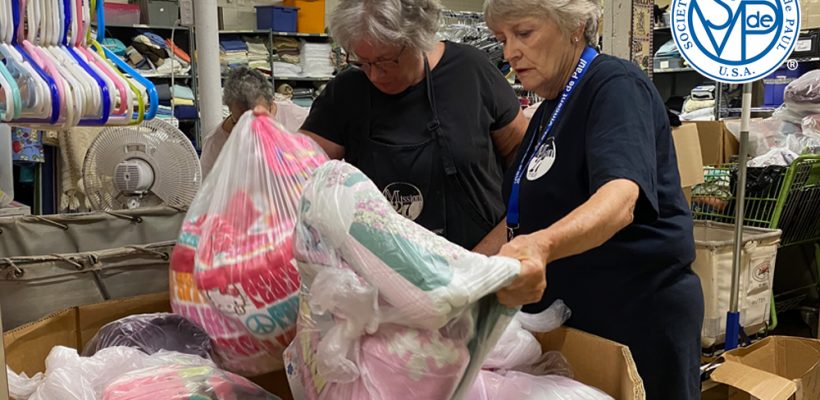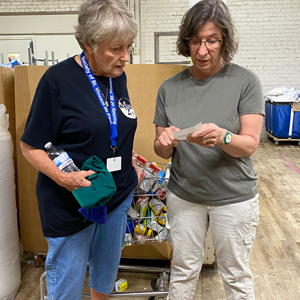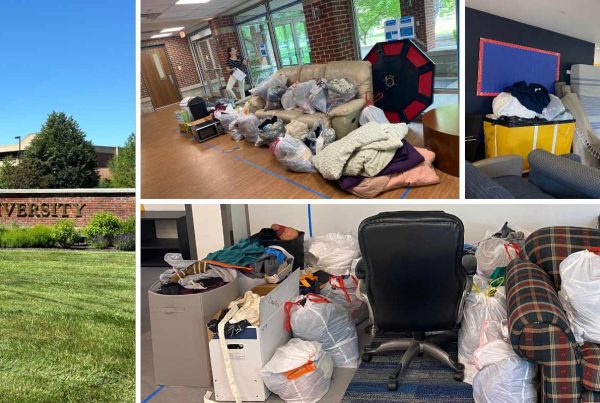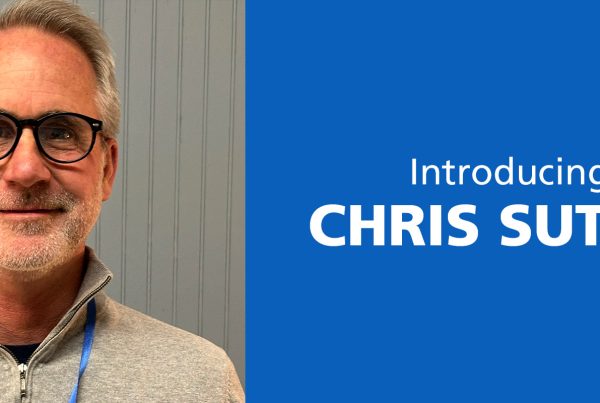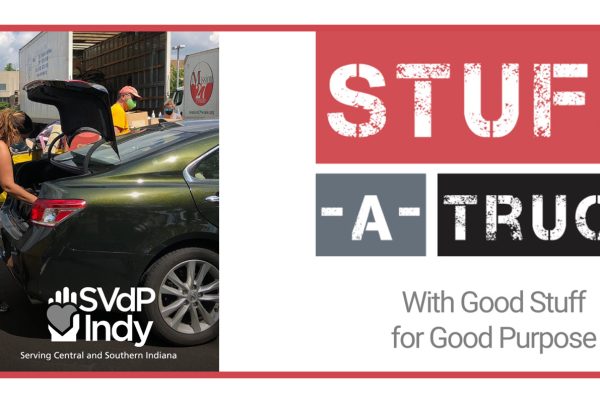By Peter Zubler, Executive Director
As an organization, our leadership has made it a regular practice to look inward—How are we doing? Where can we do things better? Are there opportunities for improvement? That doesn’t mean things aren’t going well, it just means we put ourselves in a posture of humility to change, if necessary, to better serve our neighbors in need.
Sometimes change is organic and other times it’s forced—like with the pandemic. We had to change how we operated at the food pantry. In order to continue serving our neighbors and keep everyone safe, we not only adapted to a drive-thru operation, but we assessed how things ran leading up to that end result of delivering food to local neighbors.
Skip McCulley, who served as the food pantry director at the time, led the charge. Skip has been gifted with an organizational and logistical mindset, which he honed over several years of operations experience in the transportation industry. To get us started, Skip evaluated what he calls our input and output flows—how food comes in and what we do to get it out to as many people as possible. Our goal is to have enough for everyone who comes to us, while also ensuring nothing we’ve been given or purchased goes to waste. We want to be good stewards of all of our resources and to do things as efficiently as possible.
Even more, we want everyone we come into contact with—volunteers as well as neighbors in need—to have a good experience. For volunteers, we want them to feel they have used their time in meaningful, impactful ways. And we want them to come back—again and again. And for our neighbors, we always want them to feel treated with respect and dignity. When a process runs smoothly, it frees us up to focus on relationships rather than fixing kinks or solving problems that arise.
Assessing Donation Collections
The success we experienced at the food pantry buoyed our team to look at other areas. We next evaluated our donation collection process. Prior to the pandemic, we sent our entire fleet of trucks out to collect furniture and appliance donations from households throughout the community every Saturday. As you can imagine, collecting everything in one day translated into a large influx of items at the Distribution Center all at once. It was a huge undertaking at the start of every week to sort through these donations. It also created an influx of large groups and long waits at the referral desk/client services as people came to receive items before they were gone.
Looking at inputs and outputs again, we transitioned our collection process. Now, we make daily pick-ups five days a week. Items come in on a real-time basis, making it manageable for volunteers and more efficient in terms of getting items out where they are needed most: to our homeless ministry, to individuals and families in need and to our stores. We have literally unloaded furniture directly from one of our donation trucks to the pickup truck of a family in need.
This change also allowed us to enhance the whole process around client services. Kathy Williams and her team have done a great job leading these efforts. Now, with items coming in five days a week, we have a more predictable flow of goods and services to our neighbors in need. We’ve pivoted from the random redemption of vouchers for furniture and appliances to scheduled appointments. In the end, it’s enabled us to provide more personal service, shorter wait times, and etter coordination with the dock/warehouse to ensure we have items that best fit the need.
Evaluating the Distribution Center
Now, we’re turning our attention to the overall operation of the Distribution Center—and we brought over Skip to help. Once again, we’re assessing how and where we can improve. Specifically, our goals are to:
- Be good stewards of our donations, facilities, equipment, etc.
- Work seamlessly with the Mission 27 Resale stores
- Help volunteers see and enjoy the immediate impact of their efforts
- Provide items to those in need in an efficient yet caring and thoughtful manner
Our biggest challenge is our available warehouse space—or lack thereof. Because space is limited, we have to look at how we best manage it. We want to maximize the space to its greatest potential. That means we look at the physical footprint, as well as the processes conducted within. Just as we’ve done in the other areas, we’re taking the time to evaluate by asking questions of our volunteer experts, and then testing out ideas for improved efficiency and effectiveness.
Focusing on Volunteers & Relationships
None of these changes would be possible without our volunteers. After all, volunteers are the lifeblood of our operations and the ones who put our vision into action. As we operate with greater effectiveness and precision, we’re freeing our staff and volunteers up to build relationships and be more intentional in every interaction. It is my hope that as we work together, we can keep our people safe and our resources flowing to those in need.
